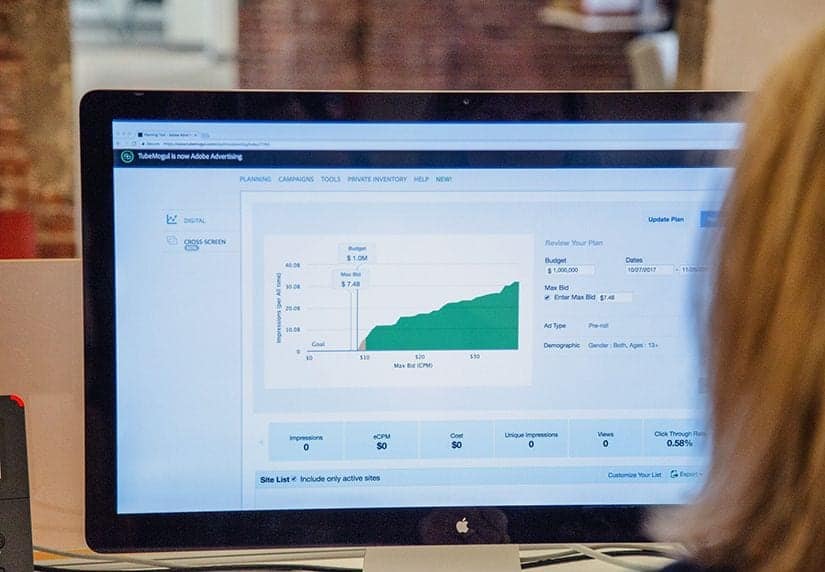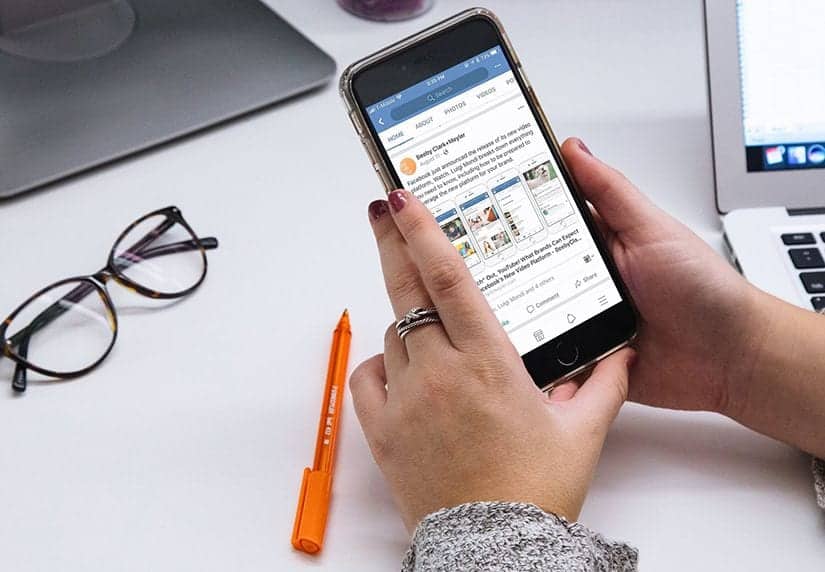Is It Time to Rethink Your Brand’s Reliance on Facebook Advertising?
This article originally appeared on Social Media Today.

 “In 10 years from now, I doubt that anyone under 50 will be watching linear TV.” These stirring words come from Rene Rechtman, president of international at Disney-owned multichannel network Maker Studios. As an employee of a parent company so entrenched in traditional television, Rechtman doesn’t mince words when it comes to TV’s predicted demise.
“In 10 years from now, I doubt that anyone under 50 will be watching linear TV.” These stirring words come from Rene Rechtman, president of international at Disney-owned multichannel network Maker Studios. As an employee of a parent company so entrenched in traditional television, Rechtman doesn’t mince words when it comes to TV’s predicted demise.
Linear TV’s encroaching competition isn’t exactly groundbreaking technology: It’s YouTube influencers, it’s streaming music, it’s podcasts. It’s video. It’s audio. It’s new clothes disguising an old physique.
Audio, in particular, is resonating more than ever thanks to the popularity of podcasting sensations such as “WTF with Marc Maron,” “Serial” (which has racked up nearly 72 million downloads since it began airing last fall, shattering all records), and ubiquitous streaming music platforms such as Pandora and Spotify. Overall, consumption of podcasts in the U.S. jumped 18 percent between spring and fall 2014, according to Edison Research. Americans now listen to roughly 21.1 million hours of podcasts daily.
And just as radio jingles used to linger like secondhand smoke — even burrow into listeners’ brains like ill-intentioned earworms — audio advertising is creeping back into the audience psyche. Just because you didn’t see it doesn’t mean it didn’t have an impact. With ample listening of popular podcasts, familiar brand names start to string together: Stamps.com, Squarespace. Listen to “Serial?” If so, then MailChimp is just as familiar as Sarah Koenig’s even-keeled voice.
So how do marketers ensure that they’re taking full advantage of the not-so-sleeping giant that is audio advertising?
Tap into new advertising formats
Audio advertising is stepping up its game on the app front. National Public Radio’s NPR One app is casting a line into digital content and is the first to leverage XAPPmedia’s new form of audio advertising, which allows users to talk back to an ad. Occasionally between segments, a short but distinct melody will indicate an advertisement followed by a standard pitch for a product. Rather than just delivering information to the listener, the ad asks if they’d like to act on that ad by opting in to download an app, for example. Another XAPP ad option allow users to call advertisers directly using voice activation only, so there is no need to touch the mobile device.
Not too long ago, Slate announced its own podcasting network, Panoply, which is banking that advertisers are looking to make meaningful connections with dedicated listeners. Slate, the home of 15 podcasts with more than 6.5 million monthly downloads, is aiming to produce and promote podcasts for other media companies, celebrities, and authors while selling ads against those podcasts and share a cut of the revenue. The New York Times, Huffington Post, Real Simple magazine, WBUR in Boston, and several others have signed on for Panoply.
Additionally, Spotify announced last fall that it will serve video ads to its audio listeners, meaning they can now get contact info for a service directly on their mobile screens. Listening to an ad that repeatedly rattles off a phone number while you’re behind the wheel is one thing, but listening to that same phone number while actually being able to tap it on your screen increases the likelihood of you actually calling, since that’s what your phone is for in the first place.
Be authentic
Just as ads seem out of place when they have nothing to do with the content, listeners are as astute as ever when it comes to knowing when they’re being marketed to, even subtly. The best kinds of podcast ads are the ones that integrate a product into the show in a meaningful way. For example, “StartUp” podcaster Alex Blumberg, whose show initially focused on him launching a — you guessed it — startup, weaves his sponsors into the program via storytelling, interviewing tech companies on their own experiences starting out (and up). In the very first episode of “StartUp,” Blumberg walks into sponsor NerdWallet’s office unannounced and tells an unsuspecting employee that the company is his first sponsor, engaging him in a dialogue about podcasts that’s totally meta and engages the audience with the sponsor in a unique way. “StartUp” just concluded its second season, which focused on a dating app.
Provide value
Audio listeners are fostering a growing attitude that something valuable, while theoretically “free,” is still worth a few a moments’ time to hear the reason why it’s free in the first place. Advertisers can’t squander that concession. Most listeners won’t balk at the first paid callout, but why chance it when brands can make an exponentially more meaningful connection where the targeting and the brand make sense together? For example, BMW recently partnered with Spotify to create customized playlists for specific U.S. road trips. The BMW-branded app on Spotify served a video to users upon the initial playlist generation, and the final playlists were shareable on social media. Spotify reported that users created more than 14,000 playlists under the BMW program.
Use data
The beauty of modern audio advertising is that we now have a lot more information about who is listening to audio content than we did with terrestrial radio, thanks to the fact that audiences must access music streaming services such as Pandora or Spotify by providing registration information or logging in with their social media accounts. When it comes to podcasts, getting audience data is a little bit trickier, but because many podcasts are already so niche — craft beer lovers, new parents, alt-comedy fans, etc. — much of the targeting has already been done for you. Download numbers can tell a story of their own, and with companies such as Stitcher — an on-demand audio app — location and user interests could also be on the table for advertisers.
Don’t be afraid to combine strategies. Audio plus data and audio plus native are two core strategies, though a combined approach should always be considered. Success is all about taking chances, and numbers will help you reduce the risk.
Remember: If you have to explain why your audio advertising plan works, then it probably doesn’t.

This article originally appeared on Social Media Today.

The Beeby Clark+Meyler team was running all over Times Square during Advertising Week NY, attending dozens of sessions to hear from industry thought...